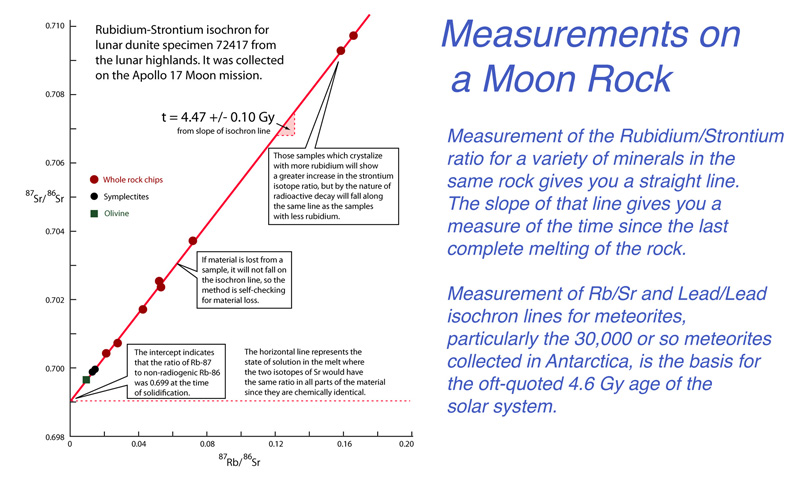
Explore the nature of time in A Brief Overview of Time



 Carbon dating depends upon carbon in the atmosphere and can be used only for dating once-living material. Carbon dating depends upon carbon in the atmosphere and can be used only for dating once-living material.
 Lake varves record annual layers.
Lake varves record annual layers.
 The Cesium atomic clock is the U.S. time standard.
The Cesium atomic clock is the U.S. time standard.
 Cepheid Variables as Yardsticks and Clocks Cepheid Variables as Yardsticks and Clocks

 Type 1a Supernovae give a measure of distance and time. Type 1a Supernovae give a measure of distance and time.
 Nuclei as Clocks measure vast time periods. Nuclei as Clocks measure vast time periods.
 Alpha decay halflives cover over 20 orders of magnitude and confirm their dependence on the fundamental constants c and h. Alpha decay halflives cover over 20 orders of magnitude and confirm their dependence on the fundamental constants c and h.
 The whole-rock isochrons are methods to read the clocks-in-the-rocks The whole-rock isochrons are methods to read the clocks-in-the-rocks
 The measurement of moon rocks from the Apollo missions gave information consistent with meteorite measurements.
The measurement of moon rocks from the Apollo missions gave information consistent with meteorite measurements.
|
Index
References |



























